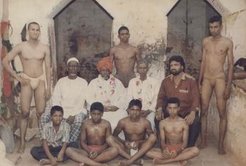An Afro-Indian Community in Karnataka, India: A Study of Ethnic Identity, its Maintenance and Change
An Afro-Indian Community in Karnataka, India: A Study of Ethnic Identity, its Maintenance and Change
Furthermore, this study aims not only to depict but also to analyse the Siddi identity. It observes how the Siddi feel about themselves and discusses their social universe in an attempted “emic” perspective. It shows how the Siddi identity is kept and cherished by the members, and how and why it is changing despite the presence of boundaries to safeguard it. Based on the findings of the research it may be able to reasonably forecast the future trend of the Siddi identity change. The Siddi social world is as dynamic as any other societies’ of India. Globalisation is continuously knocking at their doors and has even entered their houses. Based on the available findings, it is possible to cautiously anticipate the direction in which the Siddi are moving.

I will attempt to trace the geographic origin of the Karnataka Siddi based on a thorough investigation of their culture and some remains of African languages which are still in use among the community. I will also try to clarify some theoretical misconceptions and confusions on the concept of ethnicity and slavery. Besides, some misreading or misinterpretations of local terms that dramatically altered conceptual conclusions shall be amended.
It is my desire to show the plight of the African Diaspora in the Orient. I believe that the ethnologist should, to some extent, voice the concern of the people he/she is dealing with to the outside world. This is more so when one studies a people who have gone through many kinds of inhuman atrocities, including slavery, and left alone by their “masters” to the care of no one after they had served what was required of them. I shall attempt to produce, to the best of my capacity, a valuable document for implementation of development activities or further research in the area.
Moreover, it is possible to see and discuss the socio-cultural impact of the Siddi upon the host society because “the story of migration is not only about the people who migrate but also about the lands to which they go and their impacts on those lands” (Sowell 1996:2).
References
Basu, Helene (1995) Habshi- Sklaven, Sidi Fakire, Muslimische Heiligenverehrung im Westlichen Indien. Berlin: Das Arabische Buch
Muthanna, I.M. (1956) Indo-Ethiopian Relations for Centuries. Addis Ababa: Artistic Printing Press
Pankhurst, Richard (1972) The History of Ethiopia’s Relations with India Prior to the Nineteenth Century. Paper presented to the Fourth International Conference of Ethiopian Studies. Rome
Scarr, Deryck (1998) Slaving and Slavery in the Indian Ocean. New York: St. Martin’s Press, Inc.
Segal, Ronald (1995) The Black Diaspora. London: Faber and Faber
Sowel, Thomas (1996) Migrations and Cultures. New York: Basic Books
Toledano, R. Ehud (1998) Slavery and Abolition in the Ottoman Middle East. Seattle: University of Washington Press
Watson, L. James (ed.) (1980) "Slavery as an Institution, Open and Closed Systems". In: Asian and African Systems of Slavery. Oxford: Basil Blackwell
